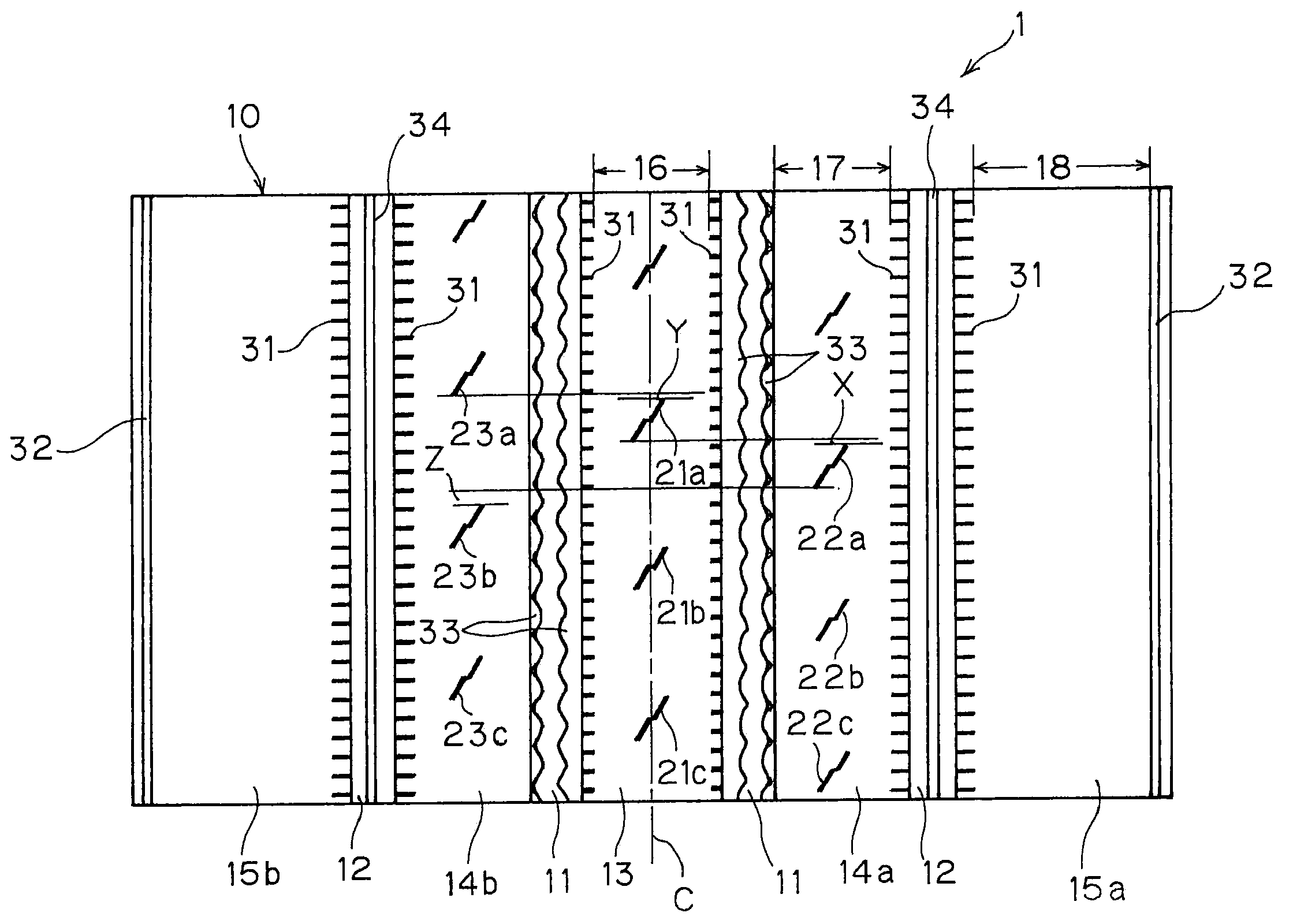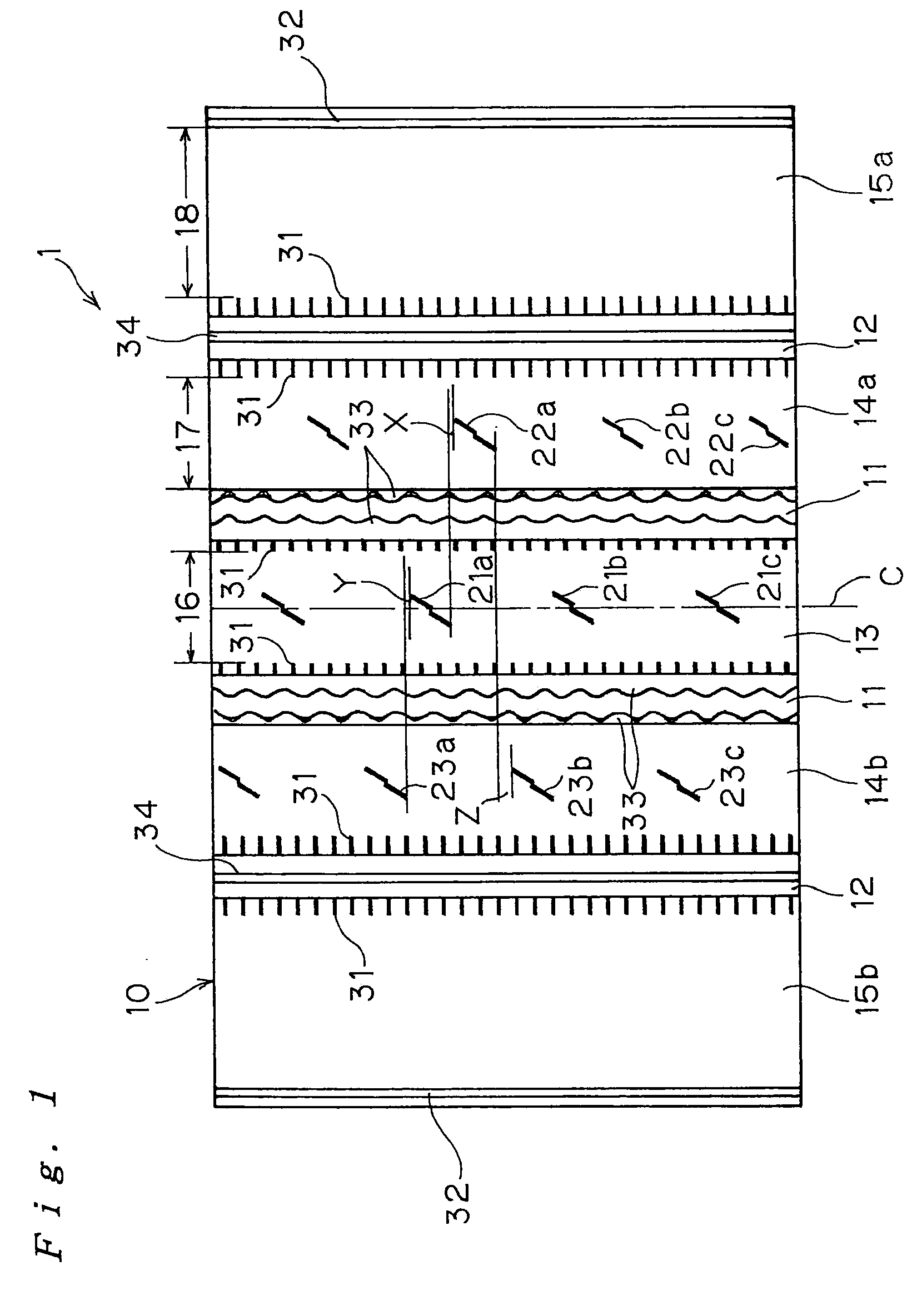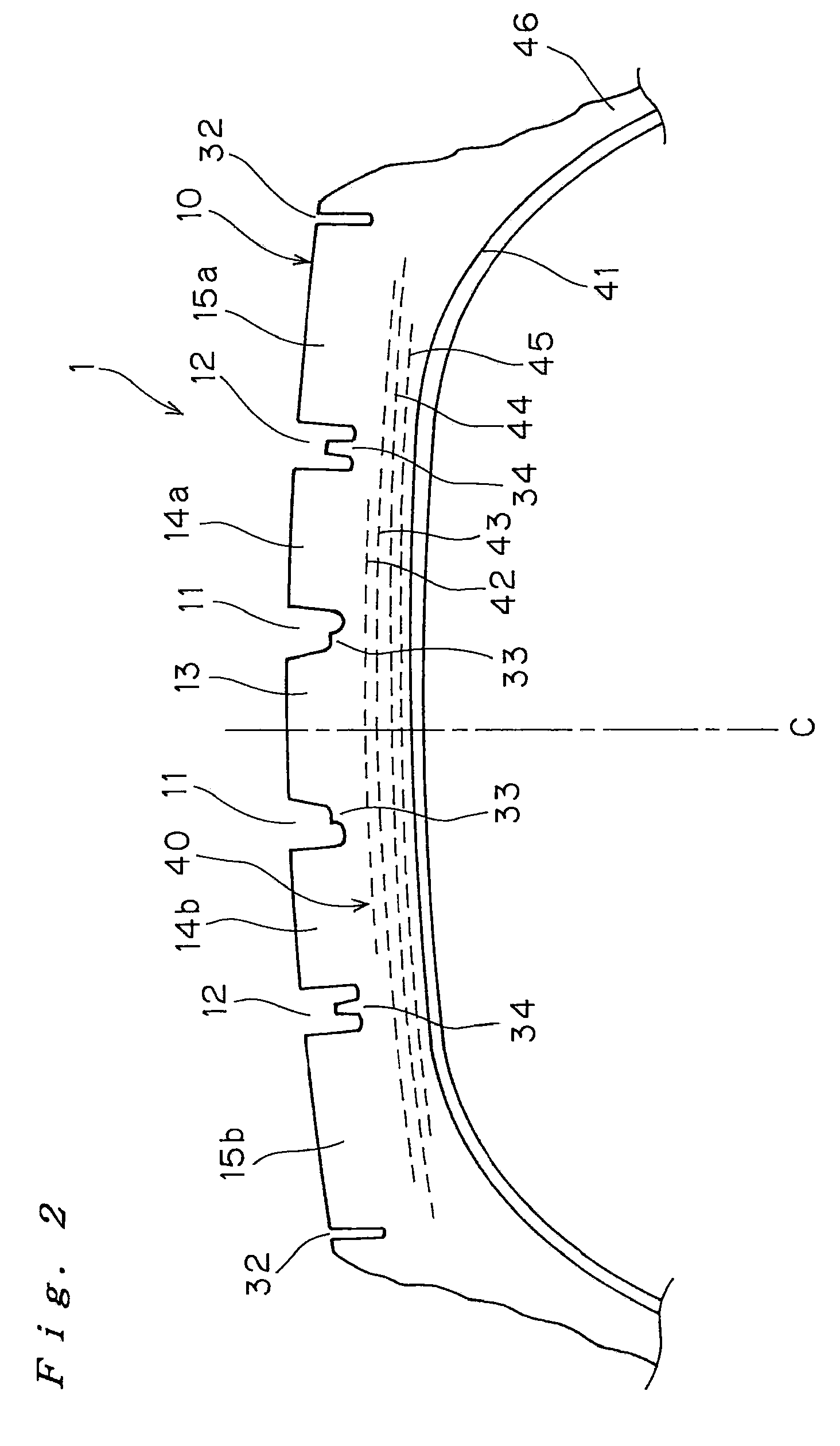Pneumatic Tire
a pneumatic tire and rib end technology, applied in the field of pneumatic tires, can solve the problems of uneven wear produced locally in the circumferential direction of the rib end circumferential direction, inability to achieve satisfactory results, and prone to vary in so as to reduce the variation in rigidity in the circumferential direction of the rib end circumference, improve the rigidity of the rib end, and improve the road holding capacity
- Summary
- Abstract
- Description
- Claims
- Application Information
AI Technical Summary
Benefits of technology
Problems solved by technology
Method used
Image
Examples
examples
[0053]Specific examples of the present invention are described in detail below.
[0054]Tires according to the present invention were prototyped as examples of the invention. Each of these tires had a tread pattern shown in FIG. 1 and zigzag closed sipes shown in FIG. 3. A comparative example having the same tread pattern as the pattern of the examples of the invention was also prototyped. The specifications (including the dimensions of the closed sipes and their arrangement) of the comparative example were modified as listed in Table 1. These tires were evaluated in terms of performance.
[0055]Each tire was a radial tire having tire size 295 / 75R22.5. Steel cords of 3+8×0.22 mm were struck into the carcass plies at a density of 30 / 50 mm. Steel cords of 3×0.20+6×0.35 mm were struck into the belt plies from the innermost layer adjacent to the carcass layer to the third layer at a density of 25 / 50 mm. High-elongation steel cords of 1×5×0.35 mm were struck into the belts in the outermost la...
PUM
 Login to View More
Login to View More Abstract
Description
Claims
Application Information
 Login to View More
Login to View More - R&D
- Intellectual Property
- Life Sciences
- Materials
- Tech Scout
- Unparalleled Data Quality
- Higher Quality Content
- 60% Fewer Hallucinations
Browse by: Latest US Patents, China's latest patents, Technical Efficacy Thesaurus, Application Domain, Technology Topic, Popular Technical Reports.
© 2025 PatSnap. All rights reserved.Legal|Privacy policy|Modern Slavery Act Transparency Statement|Sitemap|About US| Contact US: help@patsnap.com



